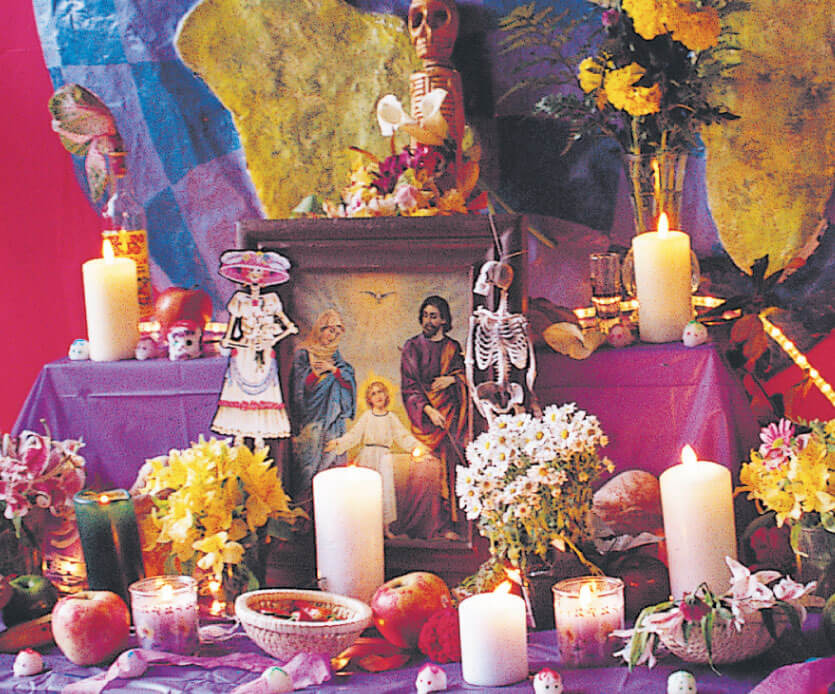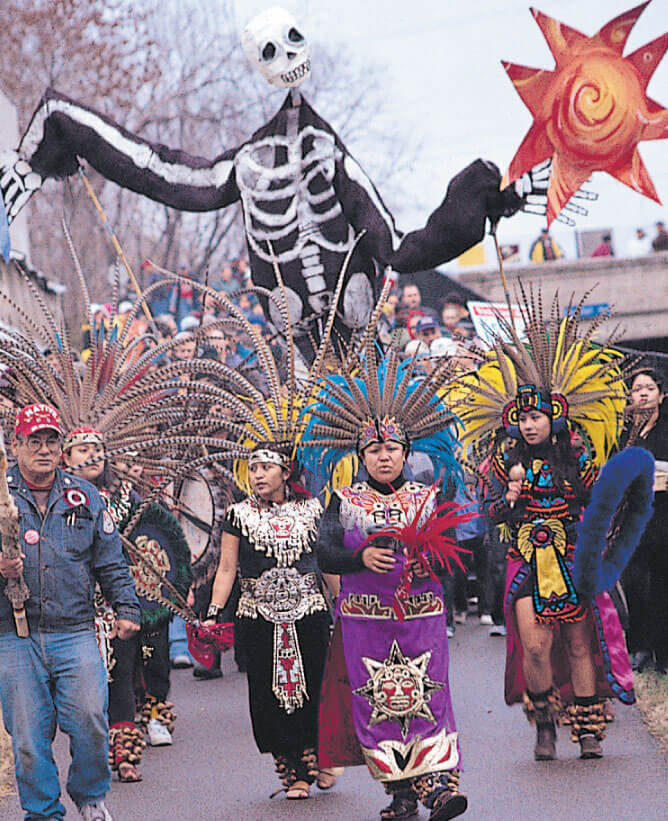When we face the death of someone we love, our Christian faith in the promise of Jesus’ resurrection must take over. This is our faith: that our loved one shares unimaginable divine life forever.
The Feast of All Saints (November 1)and All Souls Day (November2)celebrate the communion of all Christian believers with our loved ones who have died. A saint with a capital S is a person the Catholic Church has officially canonized and recognized as a model follower of Jesus. A saint with a small s is a name that the apostle Paul uses to describe every Christian. For example, Paul addresses one of his letters, “To all the saints in Christ Jesus who are in Philippi.”
We Christians today live in communion with all who followed Jesus down the centuries. When we say the Creed, we profess our faith in the communion of saints. At every Eucharist we pray for the living and the dead.
The communion of saints is the visible and invisible body of believers whose faith we begin to share when we are baptized. Just as we are born into our family at our births, we are born into the communion of saints at our baptisms.
In the communion of saints we are one with all believers. We share their faith in God who creates and sustains us, in God’s Son who becomes one of us, in the Spirit who is with us and within us in every joy and sorrow.
All Souls Day is a feast for remembering and praying for the dead as the Catholic Church teaches. To pray for all souls and all saints is to remember those whose faith we inherit in our families and in our Church. We believe all who die in God’s grace and friendship will share communion of life with God forever.
We also believe in purgatory, which the Catechism of the Catholic Church describes as “an intermediate state after death, a process of purification in the light of divine love that some may need in order to enter the joy of God” (1054).
In Mexican culture, All Hallows Eve, All Saints Day, and All Souls Day are important feast days. Mexican families make Dias los Muertos (Day of the Dead) altars, on which they put photos and mementos of deceased loved ones. They honor the dead with ofrendas — flowers, favorite food, and candles. Families also put sweet breads and water on the altars, the basic nourishment for human life.
On All Souls Day itself people take the food from the altars to the graves of family members. They clean around the graves and decorate them with marigolds (zempasuchil) and other flowers.
Marigolds are the symbolic flowers of death of the Aztec people of ancient Mexico. Family members picnic in the cemetery, light incense and candles, and keep vigils into the night. These customs introduce children to grandparents, aunts, and uncles they may never have known in life. It also eases fear of death. On this day the living visit the dead, and the dead come to life in the memories of their families and friends.
“We believe in the communion of all the faithful of Christ, those who are pilgrims on earth, the dead who are being purified, and the blessed in heaven, all together forming one Church.”
Catechism of the Catholic Church #962


